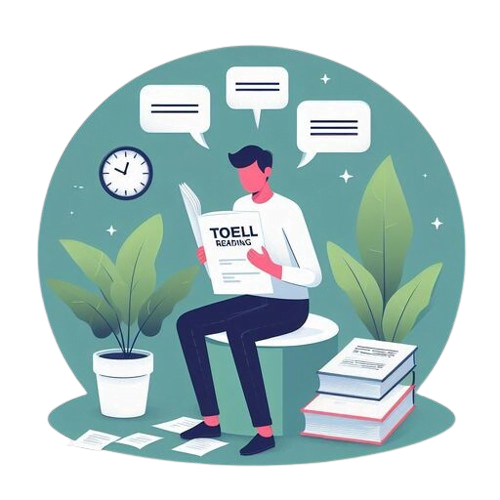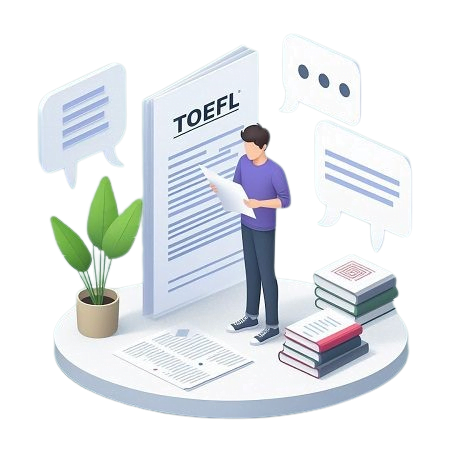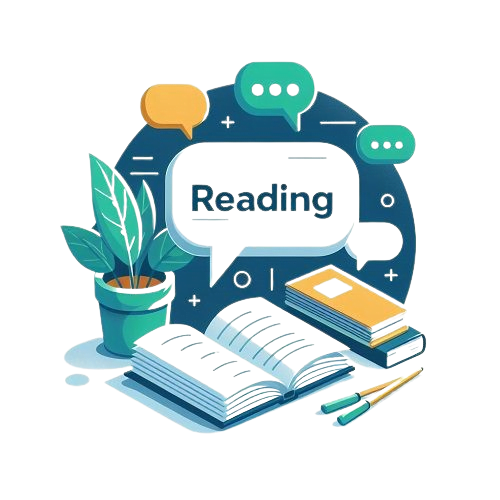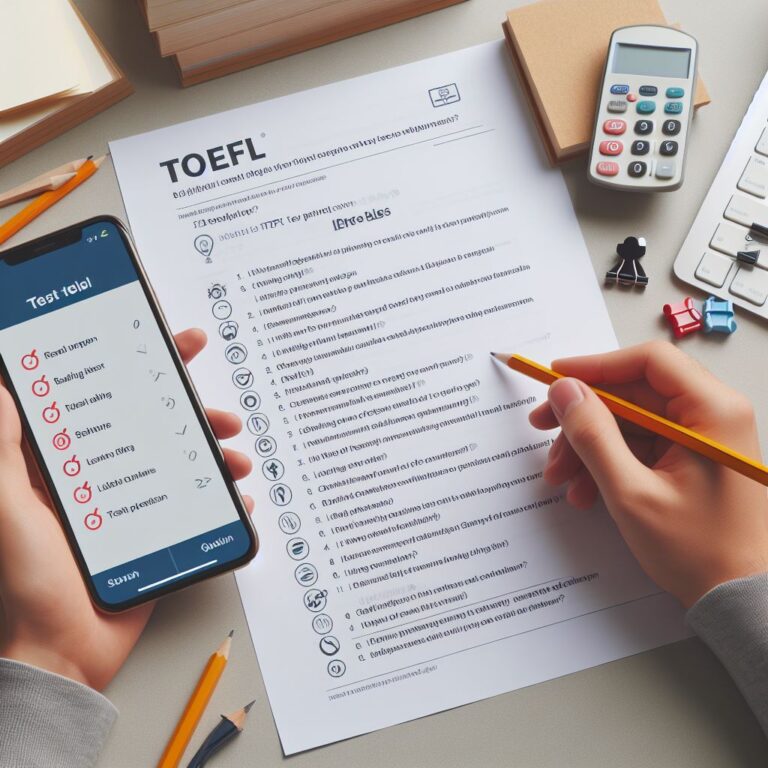TOEFL Reading: Comprehensive Guide

What you will find in this guide:
Introduction to TOEFL Reading
If you are preparing for the TOEFL test, you may be wondering how to tackle the reading section. The reading section consists of two passages, each followed by 10 questions. You have 35 minutes to complete the section. The reading section can be challenging for many test-takers, especially if you are not used to reading academic texts in English. However, there is a simple strategy that can help you improve your score and save time. Here are the steps:

TOEFL Reading Guide
Step 1: Don’t read the passage!
This may seem counterintuitive, but it is an effective technique to save time and avoid getting bogged down by the text. Instead of reading the passage, read the questions first. This way, you will know what you are looking for in the text and can avoid getting lost in irrelevant information.
Step 2: Start by reading the question!
Once you have the questions in front of you, it will tell you in which paragraph you should look for the answer. Don’t read the paragraph! Start by reading the question first. This will help you understand what the question is asking and what you need to look for in the paragraph.
Step 3: Identify the keywords of the question
After reading the question, Identify the keywords of the question to make sure you focus on what’s important and what you are supposed to find out. These are the words that are most important in the question and will help you focus on what’s relevant in the paragraph. By identifying the keywords, you can quickly scan the paragraph for the relevant information.
Step 4: Read the paragraph
One of the advantages of the TOEFL reading test over the other tests is that it tells you where you can find the answer to the question. Now that you know what to look for in the paragraph, read it carefully. Take your time to understand the context and main ideas presented in the paragraph.
Step 5: Read the options
Once you have read the paragraph, read the options provided for the question. This will help you understand what the answer choices are and what to look for in the paragraph.
Step 6: Eliminate two options that are obviously wrong
Eliminate the answer choices that are obviously wrong. This will help you narrow down your choices and increase your chances of getting the right answer.
Step 7: Choose between the remaining two options
Finally, use your logic and reasoning skills to choose between the remaining two options. Look for evidence in the paragraph that supports or contradicts each option. Choose the option that best matches what is stated or implied in
the paragraph.

TOEFL Reading Tips
Tip #1: Practice Reading with a Timer
The TOEFL Reading section is a race against the clock. You have 36 minutes to read approximately 1400 words (700 words per passage) and answer 20 questions (10 per passage). This means you need to develop a strong sense of timing and learn to manage your time effectively.
Tip #2: Timing Your Practice
One of the best ways to improve your timing is to practice under timed conditions. Set a timer on your computer or phone and see how long it takes you to complete each question. Remember, some questions will take longer to answer than others. For example, a vocabulary question might take less time than a sentence simplification question.
Here’s a rough guide to how long you should spend on each type of question:
- Vocabulary – 60 seconds
- Detail – 90 seconds
- Negative Detail – 90 seconds
- Paraphrasing – 90 seconds
- Sentence Insertion – 90 seconds
- Inference – 90 seconds
- Author’s Purpose – 90 seconds
- Pronoun Reference – 60 seconds
- Summary – 90 seconds
- Organization – 90 seconds
Don’t worry if you can’t meet these time frames right away. With practice, you’ll get faster. And remember, it’s okay to make an educated guess if you’re not 100% sure of the answer. The important thing is to answer all the questions before time runs out.
Tip #3: Beware of Modifiers in Answer Choices
Modifiers are words (usually adjectives or nouns) that change the meaning of the head noun. They can significantly alter the meaning of a statement, and they’re often used in TOEFL Reading questions to create incorrect answer choices.
Consider these examples:
- This event has had a tremendous impact.
- This event has had some impact.
- This event has had almost no impact.
Each sentence has a different meaning, all because of a single modifier. So, when you’re answering questions, pay close attention to modifiers. They can be the difference between a right answer and a wrong one.
Tip #4: Store Knowledge of Academic Vocabulary
The TOEFL Reading section features academic texts, which means the vocabulary is also at an academic level. This is where the Academic Word List comes into play. Created by linguist Averil Coxhead in 2001, it contains 570 of the most common academic words used in scholarly journals and texts.
Consider the word “acquire” as an example:
- Verb form(s) – acquire
- Noun form(s) – acquisition, acquirement, acquirer
- Adjective form(s) – acquisitive, acquirable
- Adverb form(s) – acquisitively
You don’t need to memorize all forms of a word. If you know the simple verb form (i.e., acquire), you can probably figure out the meaning of the other forms. The goal is to familiarize yourself with the headword.
While understanding these words won’t guarantee that you’ll know every word you encounter in the TOEFL Reading section, focusing on these 570 words will give you a solid foundation.
Tip #5: Be an Active Reader
TOEFL Reading passages can be quite dull, but focus is a crucial part of your grade. You can’t read TOEFL passages the same way you read a newspaper or a novel; you have to read with certain goals in mind. You must read actively.
Active reading will help you remember a lot more of what you read. The TOEFL tests your comprehension, not your memory. So, your goal is to understand what you read. Before you start reading any TOEFL paragraph, imagine you are a teacher and ask yourself, “How am I going to explain this paragraph to a six-year-old?” This mental shift can significantly improve your reading comprehension.
Tip #6: Study the Same Test More Than Once
Many TOEFL takers fall into the practice trap. They feel that the best way to improve their score is to keep doing TOEFL practice, but they never reflect on what they have learned. This is why it’s crucial to follow a specific four-step system for studying the TOEFL, called The PARA Framework:
- P – Plan: Determine what you need to study and create a study schedule.
- A – Act: Carry out your study plan. This is where taking practice tests comes in.
- R – Reflect: After each study session or practice test, take some time to reflect on what you’ve learned. What did you do well? What do you need to improve?
- A – Adjust: Based on your reflections, adjust your study plan as needed. Maybe you need to spend more time on a certain skill, or maybe you need to try a different study strategy.
Tip #7: Explain Why You Were Correct or Incorrect
Reflecting on your answers and explaining why you were correct or incorrect is a crucial part of the learning process. This is the ‘Reflect’ step in the PARA Framework (Plan, Act, Reflect, Adjust). Reflection is where you act as your own teacher and identify the reasons why you might get a question wrong on the TOEFL Reading. There are only three possible reasons:
- Misread the passage
- Misread the question
- Did not understand the vocabulary
Once you’ve identified the problem, the next step is to adjust. This means deciding what you’re going to do differently next time to avoid making the same mistake. Here are some examples:
- Misread the passage: “I have to pay better attention to keywords in the question next time. I was looking at the wrong place in the passage for the answer.”
- Misread the question: “I always make the same mistake with negative detail questions, I choose a correct answer rather than an incorrect one. From now on, I will pay special attention to each question and keep a sharp eye out for the words ‘not’ or ‘except’.”
- Did not understand the vocabulary: “I didn’t understand the word ‘acquire’. I am going to look up some examples with the word and then practice writing a few sentences on my own. If I have a teacher, I will ask her to correct my grammatical mistakes.”
Starting a journal to reflect on your answers and make plans on how to adjust your approach based on your scores can be a powerful tool for improving your TOEFL Reading abilities. It may require time and thought, but the payoff will be worth it. Good luck!






